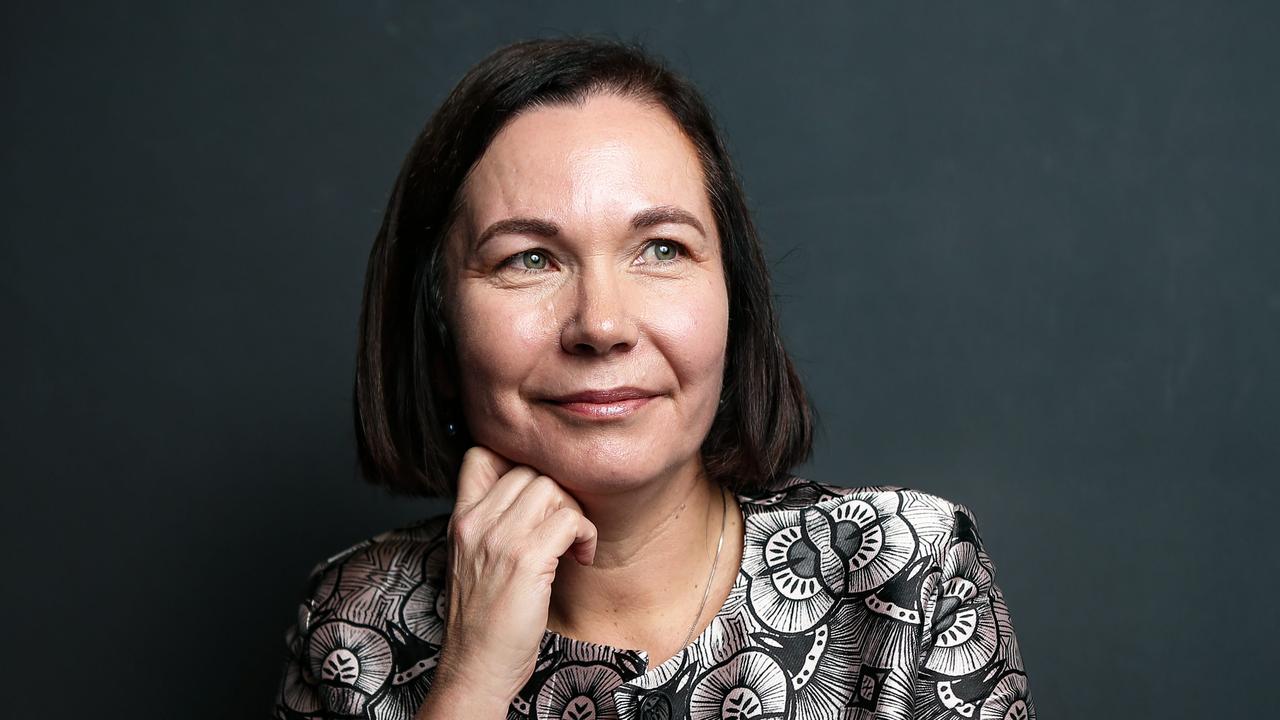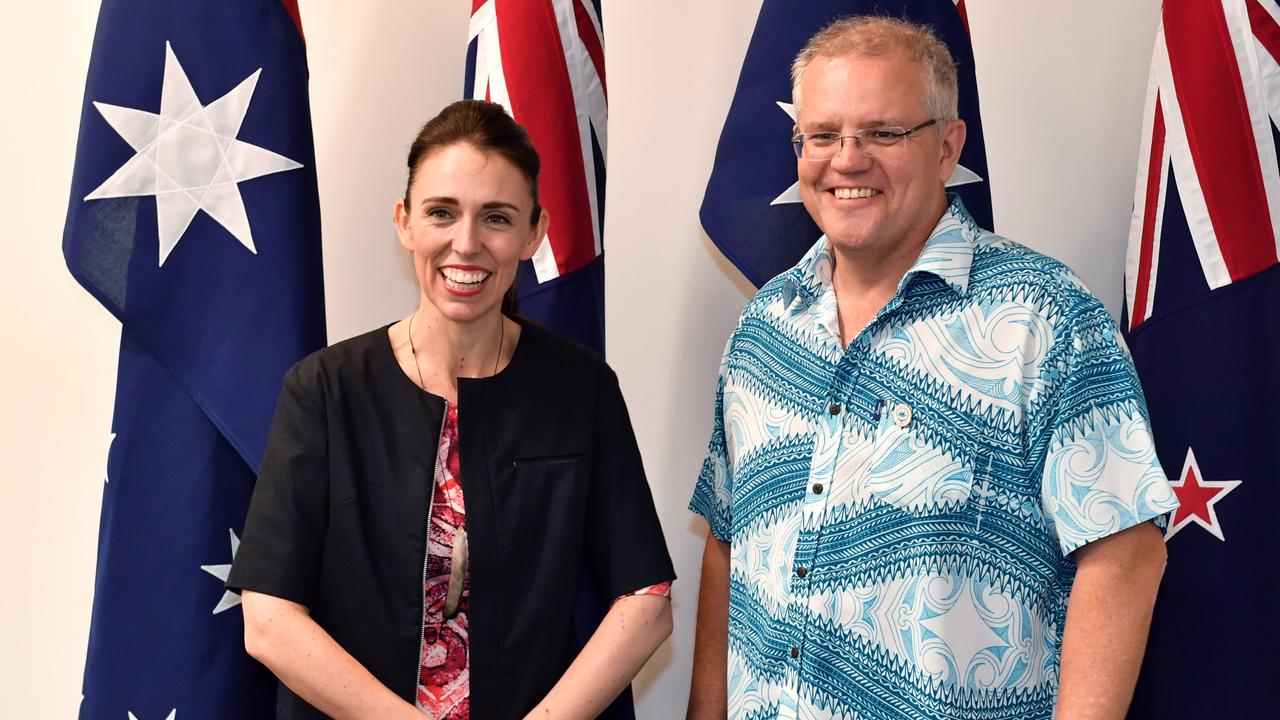Severe storms will get worse, Garnaut says
RAGING floodwaters and 290km hour cyclonic winds have provided a dramatic backdrop to the start of a parliamentary year that will be judged in large measure by whether Julia Gillard is able to deliver a price on carbon in response to climate change.
For climate scientists it is simply not possible to link individual weather events such as Cyclone Yasi or the deadly floodwaters that have swept eastern Australia with a change in global temperature.
The Bureau of Meteorology says this year's extreme weather is entirely consistent with the strong La Nina weather pattern. But there is a general view among weather forecasters and climate scientists that, in the longer term, higher global temperatures will create the right conditions for more intense, but not more frequent, storms.
This has not stopped Labor's climate change attache, Ross Garnaut, from making the link between today's weather and tomorrow's climate change.
The opening paragraph of his first in a series of eight updates of his landmark 2008 climate report says: "Extreme climatic events have become immediately more intense."
Garnaut bases his view on a recent paper in the scientific journal Nature that says since the 1970s in the world as a whole, based on studies of the north Atlantic, there has been an intensification of cyclonic events.
Despite the record showing a decrease in damaging cyclonic activity in north Queensland since the 1970s, Garnaut says there is no reason to believe that the tropical regions of northern Australia should be any different.
And he is forceful in his view that there is much worse to come.
"The warming since pre-industrial times has been one degree, the science says that without mitigation and with the sorts of emission growth from industrialisation of China, India, Indonesia and Africa that one degree is just the beginning," he warns.
"If we are seeing an intensification of extreme weather events now you ain't seen nothing yet."
Garnaut has promised a later update of the science that will explore the connection between extreme weather events and climate change.
But his treatment of the recent storm activity is a useful marker of what can be expected and where Garnaut sits generally on the issue of climate change and the need for action.
His work has been a key feature of Labor's campaign to introduce a carbon trading scheme since he was commissioned by then opposition leader Kevin Rudd to prepare his 2008 report.
The release of the first two updated papers, the first last Thursday and another on Monday, has been timed to set the scene for the start of the parliamentary year in which Labor is locked in negotiations with the Greens and independents to seek a mechanism to price carbon.
Despite reports to the contrary, Climate Change Minister Greg Combet says no decision has been made on whether to pursue a carbon tax, a trading scheme or a hybrid that starts with a tax and evolves into a trading scheme that is compatible with a global response. Combet set out Labor's options in a speech on his return from the Cancun climate discussions. He said a cap-and-trade emissions trading scheme would provide certainty about the emissions reduction that would be achieved but less certainty about a carbon price.
A carbon tax would provide certainty about the price, but the amount of emissions reduction delivered by any particular tax-rate would be less certain. A hybrid system including a fixed price emissions trading scheme would allow business to understand their carbon liability before moving to a trading scheme in a steady, deliberate manner.
According to Combet, the objective is to achieve a least-cost method that drives investment and is founded on market mechanisms. But the type of scheme is only one part of the challenge.
As in the past, carbon reduction targets and industry compensation packages will decide whether the government will get the support it needs.
The Coalition, meanwhile, is advocating a direct action model that the opposition's climate spokesman Greg Hunt describes as a market-based system that acts as a "price on abatement" unlike Labor's trading scheme or carbon tax, which he says is a "price on production".
Hunt says Labor's model would collect $12 billion to cover all carbon emission and then redistribute the money in compensation, but the Coalition's model would only target carbon emissions over an allowed amount and therefore collect only about $2bn.
Garnaut's review papers will provide options rather than recommendations, but the update is likely to refocus on a hybrid model outlined in his 2008 report.
"In my original report was my view that was the way to go if the international discussions did not give us some way for deep international trade in entitlements," Garnaut says.
"Set carbon price first and then cap and trade later."
Garnaut says whatever option was chosen it was important to legislate the institutions of a trading scheme so that it was in place when a global trading system was established.
"Once you have a stronger international price you float the price and the system works as a trading system," he says.
Garnaut has used the first of his updates to challenge some of the criticism of his original report.
"The most frequently articulated concern with the recommendations of the review was that it was wasteful for Australia to do anything because Australia represented such a small proportion of global emissions, or that the recommendations involved Australia 'doing more than its share' ," he says.
Garnaut argues Australian action could not guarantee effective global action, but the absence of Australian action would go a long way to ensuring there would be no effective global action.
"It is not unusual in international affairs for Australia to make a more or less proportionate contribution to international collective action, even when its individual contribution alone cannot be said to be decisive," he says.
"Participation in the US security operations in Afghanistan and elsewhere provide examples.
"Here it is accepted that if Australia receives some benefit from collective international action, it is inappropriate to free ride on the actions of others."
And despite the setbacks in negotiations at Copenhagen and Cancun, Garnaut says it is wrong to think the rest of the world was not taking action on climate change.
"There is a very large number of countries that have emissions trading schemes," he says.
"California has legislated for one and is in discussion with 10 other states to develop one.
"The centrepiece of Barack Obama's [recent] State of the Union address was the story of the transformation of the American energy economy.
"It won't be done through an emissions trading scheme at a national level [in the US] but it is far reaching so let's not pretend the rest of the world isn't doing something," Garnaut says. "In fact some parts of the world are doing more than I expected when I did my original report."
Garnaut's update of his report is broken down into eight instalments that will be delivered over coming months.
Last Thursday he presented a cost-benefit analysis which restated the position that delaying action would only increase the cost. He also addressed the argument about scientific uncertainty.
"There has been a bit of discussion that the science is uncertain so we should wait or do a bit less in mitigation than we otherwise would," Garnaut says.
"But when you look analytically at uncertainty the presence of uncertainty increases the urgency and the strength of the case for mitigation.
"If you had a certain outcome that would be one thing but if you have a range of possibilities the worse outcomes are usually things we are prepared to insure against."
Garnaut is also convinced that the science is becoming more certain. His latest report examines the peer-reviewed literature to form a view on what has happened since the latest UN Intergovernmental Panel on Climate Change assessment came out in 2007, which was itself based on science done before 2005.
"The general tendency is to confirm the IPCC underestimated impacts," Garnaut says. "All of the measurable impacts like increases in temperature and sea level are tracking right at the top of the range of possibilities, in some cases above them.
"What was once good physics is starting to appear in the empirical science, an increase in extreme weather events. The update of the science will try to bring the scientific developments over the last five years into account.
"I don't think there is any major area where, unfortunately, sceptical views of the science can draw anything from the real science, peer-reviewed science, that has been done in the past five years.
"All of the evidence seems to be in the other direction. I wish that were not so."



To join the conversation, please log in. Don't have an account? Register
Join the conversation, you are commenting as Logout